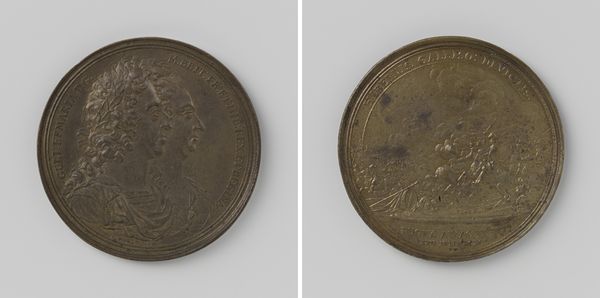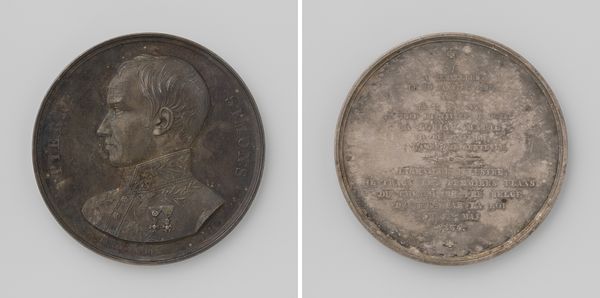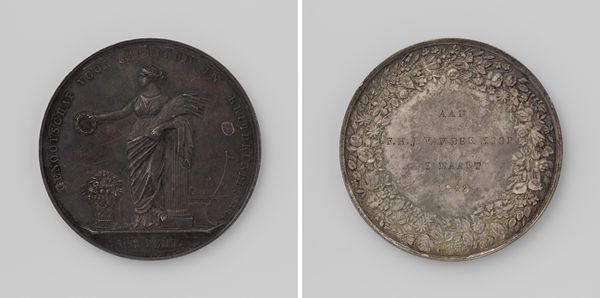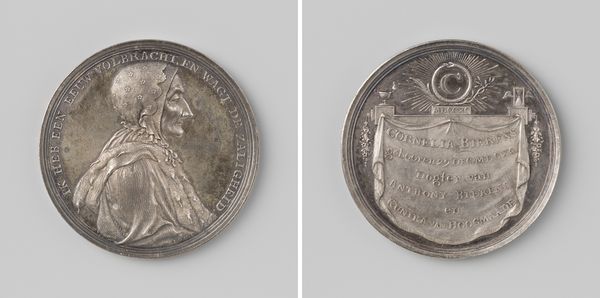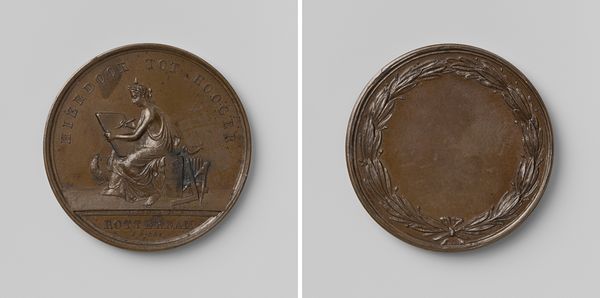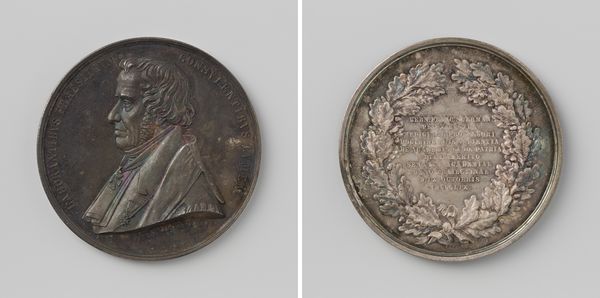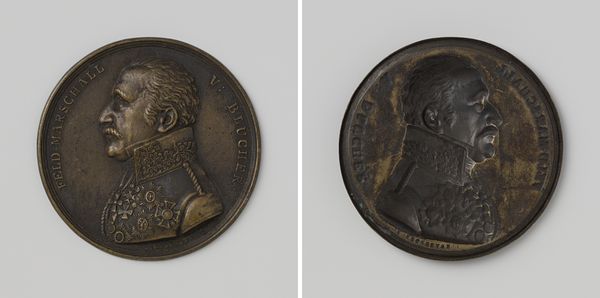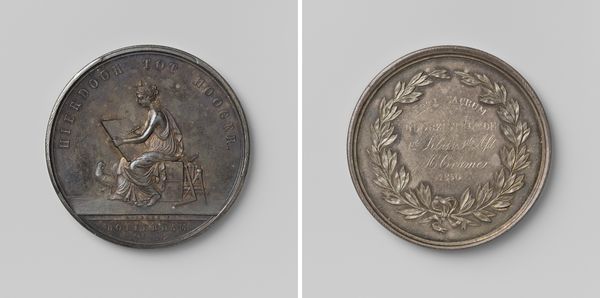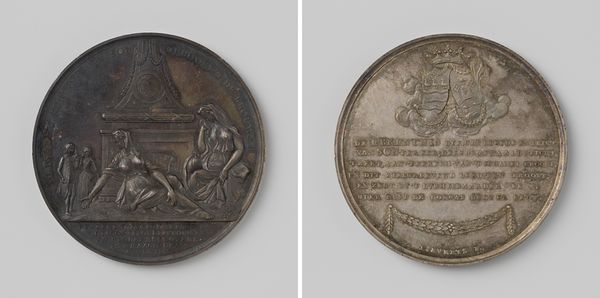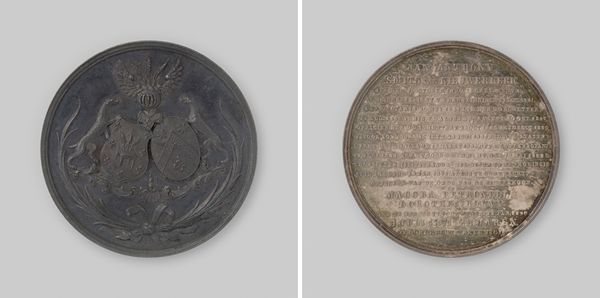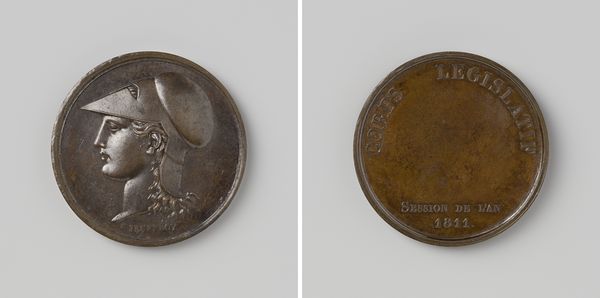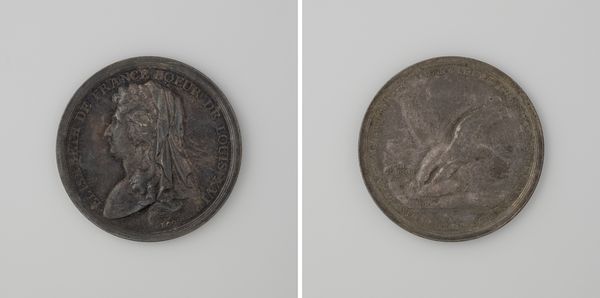
metal, relief, sculpture
#
portrait
#
metal
#
sculpture
#
relief
#
sculpture
#
history-painting
Dimensions: diameter 5.8 cm, weight 97.65 gr
Copyright: Rijks Museum: Open Domain
Curator: This striking medal, crafted around 1850, is entitled “Pieter Huidekoper, burgemeester van Amsterdam” and can be found in the Rijksmuseum’s collection. It is the work of Louis Royer. Editor: My first impression is how cold and severe it appears. The metal, presumably silver or a similar alloy, reflects light in a way that emphasizes the subject’s unyielding profile. Curator: Yes, and Royer captures not just a likeness, but a symbol of civic duty. Huidekoper’s profile is stern, but the detailing of his garments, specifically the ornate embellishments, indicates status, authority, and civic contribution. It's also an insight into the evolving perception of leadership in mid-19th century Amsterdam. Editor: Structurally, it’s interesting how the portrait fills nearly the entire space. The inscription encircling the head, “PIETER HUIDEKOPER BURGEMEESTER VAN AMSTERDAM," contributes to this feeling of compression, tightening the form. What of the medal's reverse? Curator: Ah, the flip side features an oak leaf wreath, traditionally symbolizing strength, victory, and endurance. Inside that are the words: "To the loyal Mayor who brought order in troubled times." Oak also harkens back to ancient customs where it symbolized stability. This piece subtly nods to an age-old theme of governance while memorializing an individual. Editor: Good point. The tight wreath visually reinforces this theme of enforced order. Note too that the inscription's sans-serif lettering evokes a restrained classicism, eschewing elaborate flourishes for clarity and legibility. Curator: Exactly, every component underscores his image as an agent of change during complex circumstances, as Amsterdam shifted to a new reality within a monarchy. Its existence echoes those crucial changes from republic to kingdom. Editor: On purely visual terms, Royer successfully balanced clarity with ornamentation. The play of light on metal—the highlights, mid-tones and shadows—define not only the portrait, but reinforce that commemorative gravitas. Curator: Looking at it through the symbolic lens highlights how objects become records of beliefs and desires beyond surface likeness. They can distill cultural ideas around who merits historical regard. Editor: Indeed, Royer has left a finely balanced artifact. Both a portrait, and more fundamentally, an essay on representation, order, and legacy cast in silver.
Comments
No comments
Be the first to comment and join the conversation on the ultimate creative platform.
